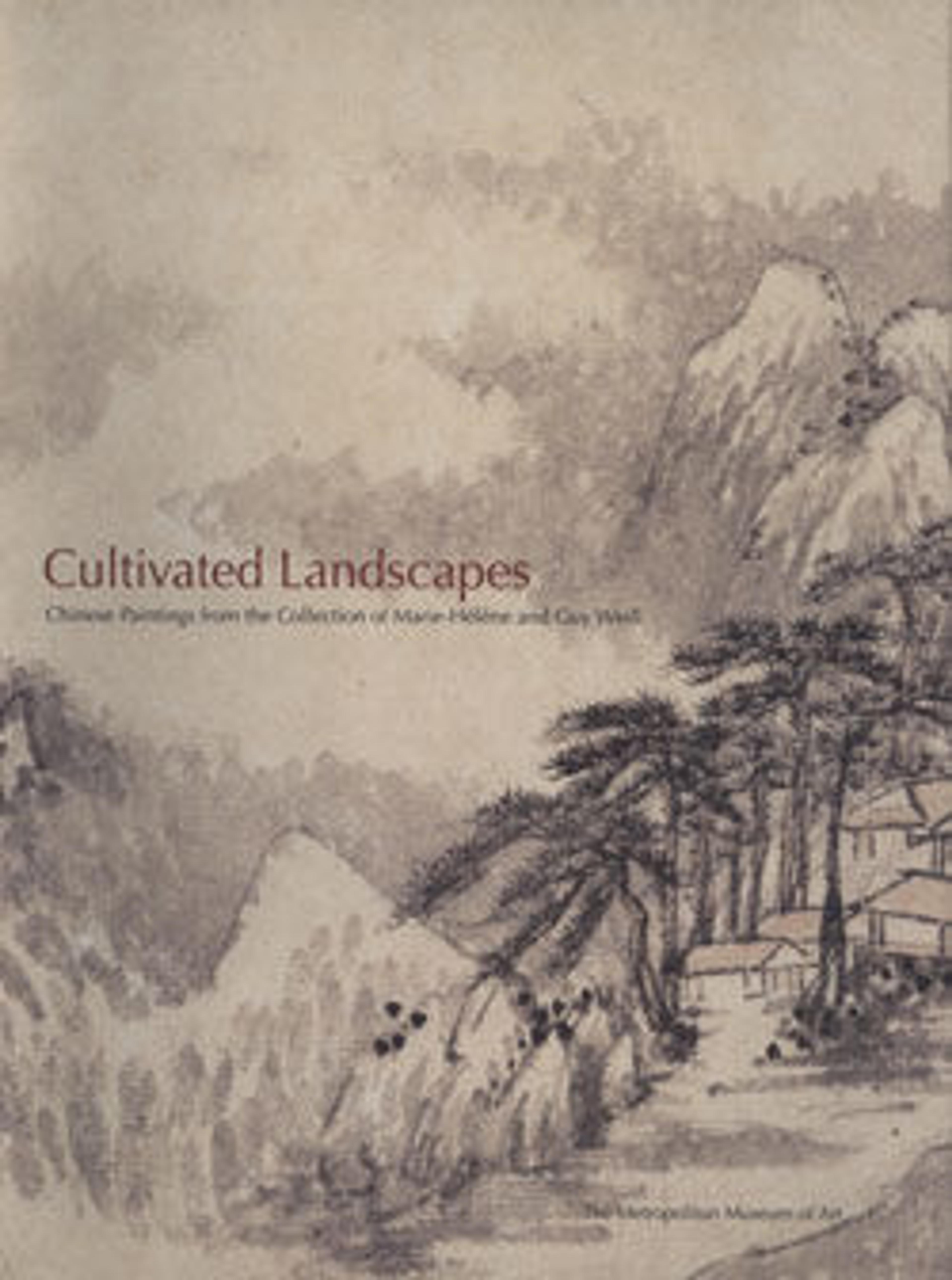The Strange Pines of Mount Tiantai
A refuge since its discovery in the fourth century, Mount Tiantai is a legendary dwelling place of Buddhist holy men; its natural stone bridge is a fabled point of connection between this world and the paradise of the immortals. Dai Benxiao, whose Ming-loyalist father committed suicide after being injured in a battle against Qing forces, focuses here on the mountain's pines. Symbolic of survival in times of adversity, the pines, having been suddenly threatened, reflect the artist's uncertainty about his ability to find spiritual sanctuary in a world from which he feels alienated:
The strangely shaped pine trees of Mount Tiantai have been depicted by artists of previous periods. . . . I have decided to portray this theme, drawing upon my own imagination. I have heard recently that most of these strange pines have met the sad fate of extinction. It seems that once the natural wonders of the sky, earth, mountains, and rivers are exposed to the intimate scrutiny of the dusty world, they do not last long. This is indeed cause for lamentation.
Dawn Ho Delbanco, trans.,
The strangely shaped pine trees of Mount Tiantai have been depicted by artists of previous periods. . . . I have decided to portray this theme, drawing upon my own imagination. I have heard recently that most of these strange pines have met the sad fate of extinction. It seems that once the natural wonders of the sky, earth, mountains, and rivers are exposed to the intimate scrutiny of the dusty world, they do not last long. This is indeed cause for lamentation.
Dawn Ho Delbanco, trans.,
Artwork Details
- 清 戴本孝 天台異松圖 軸 紙本
- Title: The Strange Pines of Mount Tiantai
- Artist: Dai Benxiao (Chinese, 1621–1693)
- Period: Qing dynasty (1644–1911)
- Date: 1687
- Culture: China
- Medium: Hanging scroll; ink on paper
- Dimensions: Image: 66 7/8 in. × 30 in. (169.9 × 76.2 cm)
Overall with mounting: 10 ft. 2 3/4 in. × 37 1/16 in. (311.8 × 94.1 cm)
Overall with knobs: 10 ft. 2 3/4 in. × 41 in. (311.8 × 104.1 cm) - Classification: Paintings
- Credit Line: Gift of Marie-Hélène and Guy Weill, in honor of Douglas Dillon, 1991
- Object Number: 1991.256
- Curatorial Department: Asian Art
Audio
7304. The Strange Pines of Mount Tiantai
0:00
0:00
We're sorry, the transcript for this audio track is not available at this time. Please email info@metmuseum.org to request a transcript for this track.
More Artwork
Research Resources
The Met provides unparalleled resources for research and welcomes an international community of students and scholars. The Met's Open Access API is where creators and researchers can connect to the The Met collection. Open Access data and public domain images are available for unrestricted commercial and noncommercial use without permission or fee.
To request images under copyright and other restrictions, please use this Image Request form.
Feedback
We continue to research and examine historical and cultural context for objects in The Met collection. If you have comments or questions about this object record, please contact us using the form below. The Museum looks forward to receiving your comments.
